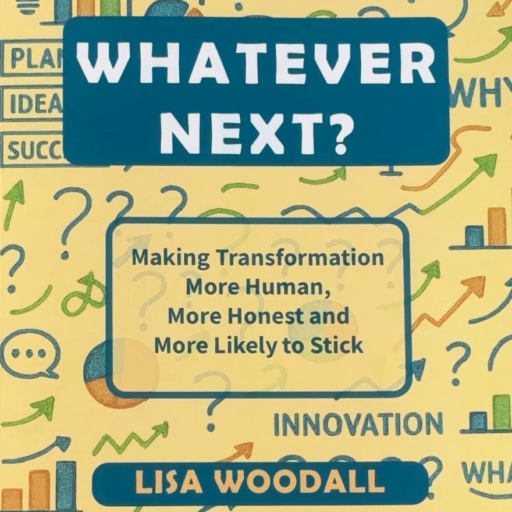Last week, I had the privilege of speaking at ING’s internal Enterprise Architecture Conference in Amsterdam a gathering of more than 200 enterprise architects from across Europe.
It was a room full of smart, curious, deeply experienced people who spend their days designing the systems, structures, and flows that keep one of Europe’s largest banks running. But that morning, I asked them to pause.
To stop thinking about platforms for a moment.
To stop thinking about roadmaps and operating models.
And to start thinking about what really makes transformation stick.
I opened with a simple invitation:
“Let’s take the next 30 minutes to talk about being human.”
That, for me, is the missing piece. Transformation doesn’t fail because of weak frameworks or poor design. It fails because somewhere along the way, we forget the people.
That idea runs through my book, Whatever Next? and it shaped the three lenses I shared with the ING audience: Rewire, Reimagine, and Reconnect.
Rewire — Beyond the Stack
Architects are, by nature, brilliant at structure. We rewire systems, processes, and data flows. We improve what exists, extend what’s possible, and integrate the new with the old.
But I asked the room: are we truly making tech stick?
Most of our conversations start with the operating core the data, the process, the technology. That’s our comfort zone. But the real test of transformation is whether the value we design actually lands with the people who use it.
I shared a four-box model – strategy, structure, coherence, experience – and asked how often we truly sit in all four boxes at once. We’re brilliant at utility and warranty at making things work and keeping them running but less comfortable with desirability, belief, and love of the new.
Real rewiring means more than integration. It means stepping up and out, designing from a point of value and human impact, not just from the logic of systems. It means collaboration across ecosystems, not just optimisation within silos.
That’s when transformation starts to live beyond diagrams , when it begins to breathe.
Reimagine — The Discipline of Possibility
From there, we moved into Reimagine.
If you’ve ever built a target state, you’ll know the buzz , the thrill of mapping a better future. Architects love that moment: identifying pain points, shaping the transition states, seeing the potential unfold on a slide.
But how often do we narrow the field too soon? How often do we rush from idea to implementation before truly exploring what’s possible?
I call this decade thinking.
Each decade of IT has had its defining challenge:
- the millennium bug in the 1990s and potential survival,
- digital disruption in the 2000s and the era of self serve,
- ecosystem building in the 2010s and connected teams,
- adaptive, hybrid working through the pandemic and flexibility,
- and now, the rise of digital intelligence and empowerment (not elimination).
Each era technically changed something but it also lead to a new “as is” for the colleague or customers.
So I asked: what if we reimagined the next decade differently? What if this era wasn’t just about smarter systems, but wiser ones, designed to serve meaning, not just metrics?
That’s what reimagination demands: courage to pause before planning, to design not just for what’s next, but for what matters next.
Reconnect — Because Transformation Doesn’t Stick Unless People Do
And then came my favourite lens: Reconnect.
I asked for a show of hands:
“Who’s working on integrations, on secure networks, on data exchanges?”
Almost every hand went up.
We’re brilliant at connecting systems. But are we designing for meaningful relationships too?
Linked to the metrics point in reimagine, i shared the story about what a group of technical professionals answered when I asked them:-
- How satisfied between 1-5 they believed the colleagues and customers were with the IT services
- How did they think colleagues and customers felt from a sad face to a happy face
- And what did they think colleagues and customers were saying around the water cooler.
There was a gap in the metric of satisfaction and the words being used and that gap mattered, it didnt need to be measured but it needed to be understood as with that understanding it could help us design better tech that would stick.
Whatever Next?
As the session closed, I left the architects with a question:
“The real question isn’t just what’s next?
It’s who do we need to hear from, and involve, so that whatever’s next truly sticks?”
When architects design for connection. when they make time for curiosity, dialogue, and belief, transformation becomes more than a roadmap. It becomes a shared act of creation.
That’s the work that matters now.
Not the next big thing.
The next meaningful one.
Lisa Woodall is the author of Whatever Next? — Making Transformation More Human, More Honest, and More Likely to Stick. Available now on Amazon and at whatevernextbook.com.

